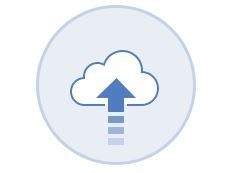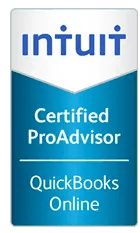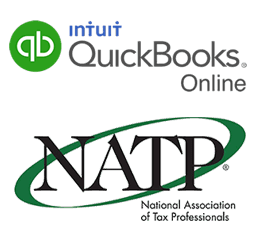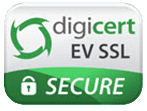Fill out our short questionnaire to see
if we are a good fit!
Every tax situation is different!
Our tax tips and videos will help guide you through the tax season.
Reminder: Always consult with your tax professional for the best advice regarding your specific situation.
Please enjoy the information, and pass along information of interest to all your family and friends.
And as always, please contact us if you have questions or need help.
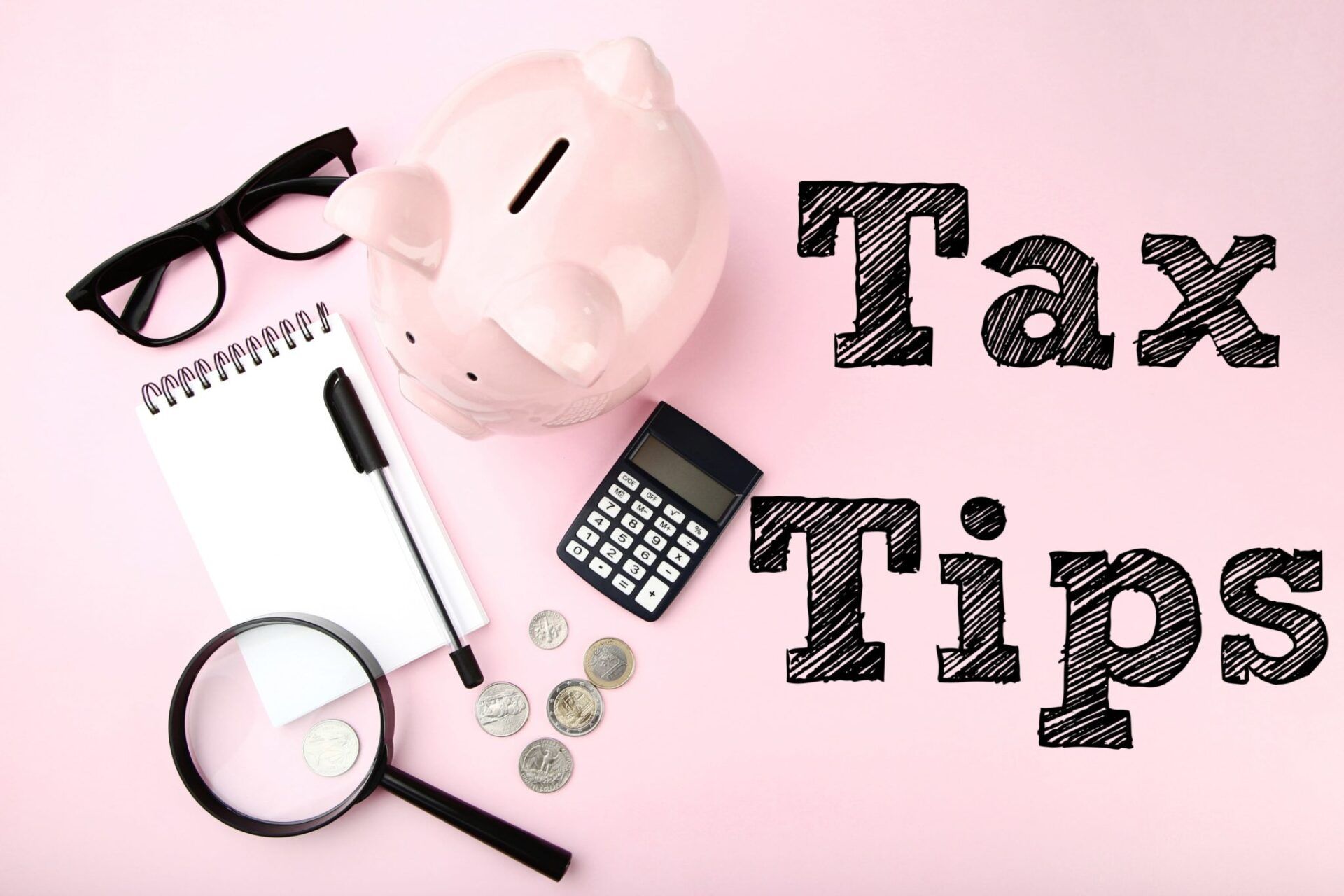
April 2022
-
Protect Your Emergency From Inflation
Most financial experts suggest keeping three to six months worth of household expenses in savings to help in case of emergency. But with record inflation, that task just got a lot harder to accomplish as virtually every safe place to put your emergency funds will not provide interest rates that keep pace with inflation. But that does not mean you cannot increase the rate of return on these funds.
Here are some ideas to reduce the impact of inflation on your emergency funds.
• Actively monitor your savings account rate. Earlier this year the Federal Reserve increased interest rates for the first time since 2018. In addition, the head of the Federal Reserve is suggesting there may be several of these rate increases in the next twelve months. This should increase the interest you can earn on the cash in your emergency account.What you need to know: Not all savings accounts are created equal. When the Fed increases the interest rate, your saving account rate should also go higher...immediately. But this is not always the case. If your bank is slow to raise your savings rate, be willing to monitor and shift funds to a bank that does. Just make sure the funds are still FDIC insured and are kept at a reputable bank.
• Take a look at Series I Savings Bonds. Series I Savings bonds are issued and backed by the U.S. government and feature two interest rate components: a fixed rate and an inflation rate. The fixed rate is set when the bond is issued and never changes during the life of the bond. The inflation rate resets semi-annually based on the Consumer Price Index.What you need to know: You must hold an I bond for at least 12 months before redeeming it. And although you can redeem it after one year, you’ll have to pay a penalty worth the interest of the previous three months if you redeem the bond within five years. And remember, you must be prepared to pay the penalty if you need the funds for an emergency.
• Creative use of Roth IRA funds in an emergency. Roth IRAs are funded with after-tax dollars. Because of this, early removal of the initial contribution is tax and penalty free. If you dip into the earnings, however, you will not only be subject to income tax, but also may be subject to a 10% early withdrawal penalty.What you need to know: Use of a Roth IRA is often a creative way to fund your emergency account while achieving higher returns with conservative investment choices, but it is not for the faint of heart. If you get this one wrong, it could cost you in taxes, penalties and lost fund value in a bear market. Prior to removing funds from any IRA, it makes sense to conduct a tax planning session.
-
Common April Tax Questions Answered!
The individual tax deadline of April 18th (yes, this year it's April 18th!) is fast approaching. Here are answers to five common questions that taxpayers typically ask in April.
1. What happens if I don’t file on time?
There’s no penalty for filing a tax return after the deadline if you are set to receive a refund. However, penalties and interest are due if taxes are not paid on time or a tax extension is not requested AND you owe tax.To avoid this problem, file your taxes as soon as you can because the penalties can pile up pretty quickly. The failure-to-file penalty is 5 percent of the unpaid tax added for each month (or part of a month) that a tax return is late.
2. Can I file for an extension?
If you are not on track to complete your tax return by April 18th, you can file an extension to give you until Oct. 17, 2022 to file your tax return. Be aware that this is only an extension of time to file — not an extension of time to pay taxes you owe. You still need to pay all taxes by April 18th to avoid penalties and interest.So even if you plan to file an extension, a preliminary review of your tax documents is necessary to determine whether or not you need to make a payment when the extension is filed.
3. What are my tax payment options?
You have many options to pay your income tax. You can mail a check, pay directly from a bank account with IRS Direct Pay, pay with a debit or credit card (for a fee), or apply online for an IRS payment plan.No matter how you pay your tax bill, finalize your tax payment arrangements by the end of the day on April 18th.
4. When will I get my refund?
According to the IRS, 90 percent of refunds for returns that are e-filed are processed in less than 21 days. You could end up waiting several months, however, if you paper file your return. The IRS is still processing a backlog of several million paper-filed tax returns from last year.You can use the Where’s My Refund? feature on the IRS website to see the status of your refund. The refund information is usually available 24 hours after receiving confirmation that your e-filed tax return was accepted by the IRS.
5. I hear the IRS is still backlogged with last year's tax returns. Is this true?
Yes. Late changing tax legislation created tons of extra work for the IRS, all while the pandemic played havoc on staffing. During a testimony made to Congress, the Director of the IRS claims the backlog will be cleared up by the end of the year...assuming no major demands for are made on their resources.
-
Help Your High School Student Become Money Smart
A dozen great topics!
Often lost in the race to get kids through high school and on to life in the real world are basic financial skills. Here are a dozen financial concepts to consider explaining to your kids before graduating high school.
1. How bank accounts work. While there are numerous online applications, consider using a good ol’ check register when teaching the basics of how to track and reconcile bank account activity.
2. How credit cards work. Emphasize to your child that credit card spending actually creates a loan. Go through a monthly statement together and show how interest is calculated and stress the need to never carry a balance from month to month by showing how long it takes to pay off the debt with minimum payments.
3. Tax basics. When your child receives their first paycheck, walk through their paystub to explain Social Security and Medicare taxes, federal income tax withholdings, and state tax withholdings. If they receive a Form 1099 instead of a paycheck, consider opening a savings account and explain that they will need to set aside a certain percentage of their money to pay the IRS.
4. The power of a retirement account. Explain the advantages of long-term savings tools like an IRA. The wise saver can turn into a self-made millionaire by starting their retirement savings at a young age.
5. How credit scores work. Consider explaining how credit scores work and the importance of keeping their score at the highest level possible. If your child is like many young adults who currently doesn’t have a credit score, consider downloading your own credit report and walk through it with them.
6. Spend within your means. Saving first before spending is a simple concept that is becoming a lost art. Help your child understand this by setting their sights on something they want, and then help them save money to buy it.
7. The art of saving. Part of spending within your means implies that your child has healthy savings habits. Walk your child through the techniques that work for you. Perhaps it is setting up a separate savings account or automatic transfers from a paycheck.
8. The strength of investing. The most valuable investment a young person can make is in themselves. Whether it’s a college degree or a trade school diploma, your child can build tremendous value with skills that will provide a positive financial return each year.
9. Understanding of stocks and mutual funds. With an understanding of investments, consider teaching your child some of the basic investments available to them. Stocks and mutual funds are the most common, but also consider explaining bonds, CD’s, annuities and other investments.
10. Budgeting. Help your child create a basic budget, then help them track their savings and spending against this budget.
11. Cash flow. The hard way to learn the lesson of cash flow is when bill collectors are calling and there simply isn’t money to pay them. When creating an initial budget, show your child the flow of funds each month.
12. Calculation of net worth. Assets (what you own) minus liabilities (what you owe others) equals net worth. Every person has a net worth...even a child. So help them understand theirs and periodically calculate it.
-
The Benefits of Being a Sole Proprietor
Many start-up businesses move from hobby status to a business when they start to make a profit. The tax entity typically used is a sole proprietorship. Taxes on this business activity type flow through your personal tax return on a Schedule C. This business form has many benefits.
Here are some to consider:
• You can hire your kids and decrease your tax bill. As a sole proprietor, you can hire your kids and avoid paying Social Security and Medicare taxes for their work. While there are exceptions, this can generally save your small business over 7.65% on their wages.
• Your kids can benefit, too. Any income your kids earn that’s less than $12,950 isn’t taxed at the federal level. So this is a great way to build a tax-free savings account for your children. Remember, though, that their work must reflect actual activity and reasonable pay. So consider hiring your kids to do copying, act as a receptionist, provide office clean up, advertising or other reasonable activities for your business.
• Fewer tax forms and filings. As a sole proprietor, your business activity is reported on a Schedule C within your personal Form 1040 tax return. Other business types like an S corporation, C corporation or a partnership must file separate tax returns, which makes tax compliance a lot more complicated.
• More control over revenue and expense. You often have more control over the taxable income of your small business as a sole proprietor. This can provide more flexibility in determining the timing of some of your revenue and business expenses, which can be used as a great tax planning tool.
• Hire your spouse. If handled correctly, a spouse hired as an employee can work to your advantage as a sole proprietor. As long as the spouse is truly an employee of the business, the sole proprietor can benefit as a member of their employee’s (spouse’s) family benefits. This can include potential medical expense reimbursements.
• Funding a retirement account. You can also reduce your business' taxable income by placing some of the profits into a retirement account like an IRA. As a sole proprietor, you can readily manage your marginal tax rate by controlling the amount you wish to set aside in this pre-tax retirement account.
• It's not all roses. While there are many benefits of running your business as a sole proprietor, don't forget the drawbacks. One of the most significant drawbacks is the lack of personal legal protection, which is a feature in other business forms like corporations and Limited Liability Companies. Most sole proprietors address this with proper business insurance, so do not overlook the need to find coverage for yourself.
-
Knocking Down Scholarship Barrierse
There’s plenty of money available for you to pursue a post-secondary education for either you or your child!
Here are several barriers that could be getting in the way of securing money to pay for school.
Common misconceptions
Scholarships are only for top scholars and athletes. Many of the splashy news stories are certainly about high-profile students who snag a fully-paid-for scholarship. There are an unbelievable number of scholarships, however, that do not take grades or athletic ability into consideration whatsoever.
Scholarships are only for students attending college. Enrollment in vocational and trade schools has nearly doubled since 2000, according to the National Center for Education Statistics. And the good news for prospective students is that scholarships for vocational and trade schools are just as plentiful as scholarships for four-year colleges and universities.
You have to be a great writer. Winning scholarships is more often about what you write than how you write. And for some scholarships, following the application’s directions and answering the questions that are asked is more important than how well you write.
You have to be a high school student. Scholarships aren’t just for soon-to-be high school graduates. Many schools have degree programs – and corresponding scholarships – aimed at older adults who are looking to learn new skills or make a transition in their career. Scholarships are also available for graduate students.
Finding scholarships takes too much time. Yes, you’ll need to invest a certain amount of time to find and apply for scholarships, but finding financial aid may not require as much of a time investment as you may think with tons of available online tools.
What to do
• Follow the directions! You’d be surprised how many applicants don’t read or follow the rules of the scholarships. Take the time to read through all instructions, and thoughtfully answer the questions that are asked.
• Apply every year by January. For every year that you’re attending a post-secondary school, consider setting aside some time in the fall and early winter to complete scholarship applications for the upcoming school year. Many applications need to be completed by January for the following school year.
• Ask your school. Nearly every college in the U.S. offers some form of merit-based financial aid. You’ll likely need to complete the Free Application for Federal Student Aid (FAFSA), as many colleges have all students apply for scholarships by completing the FAFSA. This includes students who may qualify for only merit-based scholarships.
• Ask local businesses. Many local businesses, civic groups, foundations, and religious or community organizations offer scholarships. So ask around in your community about available financial aid.
The early bird often gets the worm, but the bird that does not go looking for one will never get one!
March 2022
-
The Secret to a Quick Tax Refund
Delayed tax refunds, penalties for not filing 2020 tax returns on time that were actually filed on time, and timely tax payments being flagged as late are just some of the headaches taxpayers are grappling with due to a massive backlog of several million unprocessed tax returns the IRS is trying to wade out from under.
Here's how to avoid getting your tax refund delayed and steer clear from late-filing and payment penalties resulting from the IRS backlog:
What you need to know
• E-file your return! The secret to getting a quick tax refund is to e-file your 2021 tax return! The IRS says approximately 90% of the more than 160 million individual tax returns expected for the 2021 tax year will be e-filed. The majority of these taxpayers will avoid any issues filing their return and getting their refund. If you do e-file, don't forget to sign Form 8879, which authorizes the e-filing of your return.
• Stay calm if you receive a letter from the IRS. You may receive an IRS notice indicating you have an unfiled tax return or that you have an unpaid balance on your account. If the notice was mailed because of the backlog and you indeed filed the tax return in question or paid the amount due listed, the IRS says there is no need to call or respond to the notice as it’s continuing to process prior year tax returns as quickly as possible.
• Certified mail is your friend. If you receive an IRS notice for a situation not related to the backlog, you’ll want to respond in a timely fashion via certified mail. This will provide proof of your timely correspondence. So even if your response gets lost or caught up in the backlog, you’ll have evidence that you responded by the deadline listed on the notice. Remember that delays in responses could generate penalties and additional interest payments.
• Be patient if you need to talk with the IRS. The IRS received a record 282 million phone calls during its 2021 fiscal year, according to National Taxpayer Advocate Erin Collins. Only 32 million of these calls were answered. Collins said the best time to call the IRS are Wednesdays through Fridays, especially early mornings starting at 7 am Eastern time.
-
Read the Fine Print
According to a recent Deloitte survey, 91 percent of people agree to terms and conditions without reading the legal agreement. While reading through legally complex language may be slow and painful, it’s more important than you think.
Here are four reasons why reading entire legal agreements make sense:
You miss a major technicality. Many agreements have an exit penalty that requires you to pay for a period of time after you terminate an agreement. Others automatically renew your agreement for a year with exit penalties unless you tell them in writing you do not wish to renew prior to a key date. In a recent example of missing a legal technicality, eight teachers claimed the Department of Education (DOE) mishandled a debt forgiveness program that promised to reduce student loans after 10 years of public service. In most of the cases, the teacher’s application was denied because, according to the DOE, they were in the wrong type of loan or payment program.
You give something away. With extensive agreement documents (PayPal’s user agreement is over 50 pages long!), it’s easy for a company to add language that grants itself rights to something that’s yours.
Here are some examples:
• Your identity. Companies like Facebook grant itself rights to use your likeness and personal information for targeted advertising unless you catch the clause and take action.
• Your work. If you create a presentation using online tools, the agreement might allow the site to use the presentation without your permission.
• Your location. Most navigation software tracks your location even when not using their application. The same is true with most newer vehicles. The only way to catch these tracking rights is to read the clause in the agreement.
You're not comfortable with the risks. Data breaches are occurring more often and are hard to prevent. To reduce their exposure to litigation, businesses are continuing to add language to agreements to protect themselves. Your job, as the consumer, is to know these risks when signing up for a new service. The more personal information you provide, the more important it is to understand your legal recourse if the supplier of your service is hacked.
You miss something good. Reading an agreement to the end may pay off. A woman in Georgia won $10,000 just by reading her travel insurance agreement. The company, SquareMouth, had a "Pays to Read" program that awarded a cash prize to the first person to read the clause with a cash prize. For most people, it’s more likely you’ll find additional benefits that come with the agreement or laugh at some humor injected by the company.
-
Tax Saving Tips for Parents AND Grandparents
With careful tax planning, you can use the kiddie tax rules to reduce your tax obligation. Here’s what you need to know.
Background
The term kiddie tax was introduced by the Tax Reform Act of 1986. The rules are intended to keep parents from shifting their investment income to their children to have it taxed at their child's lower tax rate. In 2022 the law requires a child's unearned income (generally dividends, interest, and capital gains) above $2,300 be taxed at their parent's tax rate.
Who the Kiddie Tax Applies To
• Children under the age of 18
• Full-time students under the age of 24 and providing less than half of their own financial support
• Children with unearned incomes above $2,300
Who/What the Kiddie Tax Does NOT Apply To
• Earned income (wages and self-employed income from things like babysitting or paper routes)
• Children that are age 18 or older and have earnings providing more than half of their support
• Gifts received by your child during the year
How the Kiddie Tax Works
• The first $1,150 of unearned income is generally tax-free
• The next $1,150 of unearned income is taxed at the child's (usually lower) tax rate
• The excess over $2,300 is taxed at the parent's rate.
Tax Planning With the Kiddie Tax Rules
While your child's unearned income above $2,300 is a problem, you will still want to leverage the tax advantage up to this amount.
Here are some ideas:
• Maximize your lower tax investment options. Look for gains in your child's investment accounts to maximize the use of your child's kiddie tax threshold each year. You could consider selling stocks to capture your child's investment gains and then buy the stock back later to establish a higher cost basis.
• Be careful where you report a child's unearned income. Don't automatically add your child's unearned income to your tax return. It might inadvertently raise your taxes in surprising ways by reducing your tax benefits in other programs like the American Opportunity Credit.
• Leverage gift giving. If your children are not maximizing tax-free investment income each year, consider gifting funds to allow for unearned income up to the kiddie tax thresholds. Just be careful, as these assets can have an impact on a child's financial aid when approaching college age years.
Properly managed, the kiddie tax rules can be used to your advantage. But be careful, this part of the tax code can create an unwelcome surprise if not handled properly.
-
Reviewing Financial Decisions When Interest Rates Change
Interest rates are expected to increase this year in response to inflation that is running at a 40-year high. How will you be affected?
Any interest rate revision can cause a ripple effect throughout the economy. Accordingly, the Federal Reserve’s actions probably will exert at least a moderate influence over financial choices that you may make at home and in your business in 2022 and beyond.
Savings and debt
As a consumer, you stand to gain from rising interest rates because you’ll likely earn a better return on your deposits. Over the last ten years, placing your money in a certificate of deposit or passbook savings account has been hardly more profitable than stuffing it under a mattress. On the other hand, the cost of borrowing money will likely increase. As a result, mortgages, car loans, and credit cards will demand higher interest rates. That’s not a big deal if you’re already locked into low-interest fixed-rate loans. But if you have a variable rate loan or carry balances on your credit cards, you may find your monthly payments starting to increase.
Investments
On the investment front, market volatility may increase because rate increases are not completely predictable. Market sectors will likely exhibit varied responses to changes in interest rates. Those sectors that are less dependent on discretionary income may be less affected – after all, you need to buy gas, clothes, and groceries regardless of changes in interest rates.
As you adjust your financial plan, you might only need to make minor changes. Staying the course with a well-diversified retirement portfolio is still a prudent strategy. However, you may want to review your investment allocations.
Your Business
Rising interest rates can also affect your business. If your company’s balance sheet has variable-rate debt, rising interest rates can affect your bottom line and possibly your plans for growth. As the cost of borrowing increases, taking out loans for new equipment or financing expansion with credit may become less desirable.
-
Debt: Gone, But Not Forgotten by the IRS
With the ups and downs of our economy over the last 2 years, you may have had a loan or credit card balance forgiven or cancelled by a financial institution. You would think that the cancellation of debt by a credit card company or mortgage company would be a good thing for you and your family. And it can be, but it can also be considered taxable income by the IRS.
Here is a quick review of various debt cancellation situations.
• Consumer debt. If you have gone through some type of credit workout program on consumer debt, it’s likely that some of your debt has been cancelled. If that is the case, be prepared to receive IRS Form 1099-C representing the amount of debt cancelled. The IRS considers that amount taxable income to you, and they expect to see it reported on your tax return. The exception is if you file for bankruptcy. With bankruptcy, generally the debt cancelled is not taxable.
Even if you are not legally bankrupt, you might be technically insolvent where your liabilities exceed your assets. If this is the case, you can exclude your debt cancellation income by reporting your financial condition and filing IRS Form 982 with your tax return.
• Primary home. If your home is short sold or foreclosed and the lender receives less than the total amount of the outstanding loan, expect that amount of debt cancellation to be reported to you and the IRS. But special rules allow you to exclude up to $2 million in cancellation income in many circumstances. You will again need to complete IRS Form 982, but the exclusion from taxable income brought about by the debt cancellation on your primary residence is incredibly liberal. So make sure to take advantage of these rules should they apply to you.
• Student loans. If your school closes while enrolled or soon after you withdraw, you may be eligible to discharge your federal student loan and not include the forgiven amount as taxable income. You also may be eligible to exclude from taxable income any student loans discharged due to your school misleading you or engaging in other misconduct in violation of certain state laws.
• Second home, rental property, investment property, business property. The rules for debt cancellation on second homes, rental property, and investment or business property can be extremely complicated. Given your cost of these properties, your financial condition, and the amount of debt cancelled, it’s still possible to have this debt cancellation income taxed at a preferred capital gains rate, or even considered not taxable at all.
-
Hiring Your First Employee? Make It A Success!
Are you ready to hire your first employee? Perhaps you started a new business, and are working solo or with a spouse or business partner. Now the business is growing and there’s just too much to do. You find yourself working long hours and still not keeping up. It may be time to make your first hire. Think of the hiring process in two stages.
Defining your needs
Long before you start interviewing, think carefully about why you need an employee and how you’re going to work with the new hire. Do you need someone to bring new skills that the business is lacking? Or are you looking for someone to share your workload and free up your time?
If you’re looking for specific skills, could you use a consultant, a temp agency, or another outside source?
Remember that hiring an employee will open up a wealth of new issues to take up your time – payroll, employment regulations, tax reporting, benefits, and so on. Make sure there’s no way to get the help you need without these complications.
Will your new employee be part-time or full-time? Will he or she work under your direct supervision, or will you delegate responsibility to your new hire? Are you prepared for the challenge of giving up hands-on control over part of your business? Think hard about these issues until you have a very clear idea of what you want from your new employee.
Know the skills you need and the role you expect the new person to play.
Finding the right person
You and your employee will be working closely together, so good personal chemistry is essential. There’s no magic formula for choosing the right person. Think about possible candidates whose work you know, perhaps employees of your suppliers or other businesses you deal with. Interview thoroughly, check references, and above all, trust your intuition.
Making your first hiring decision is seldom easy.
Recent Blog Articles

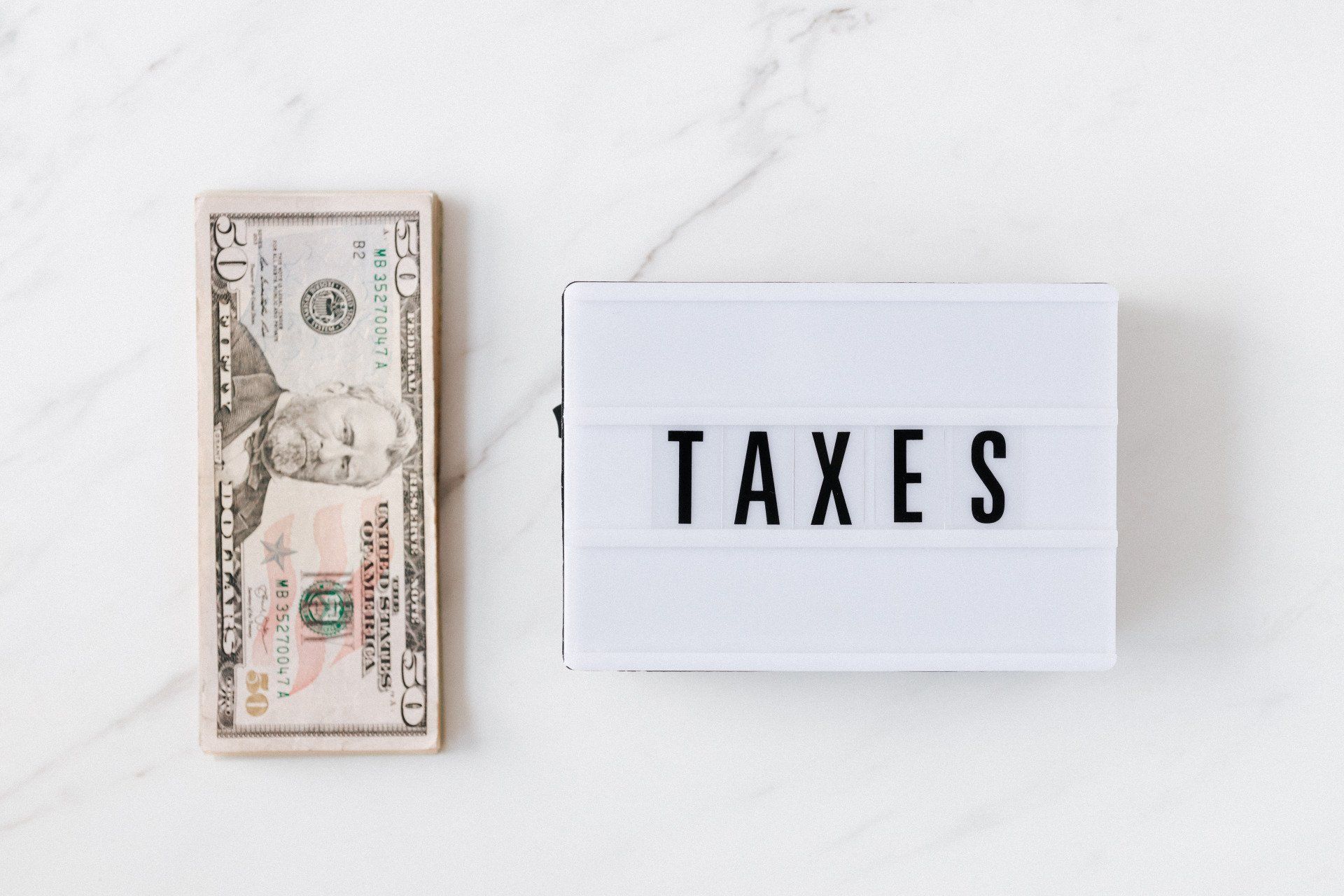

Tafgraphics Design Studio, Inc.




